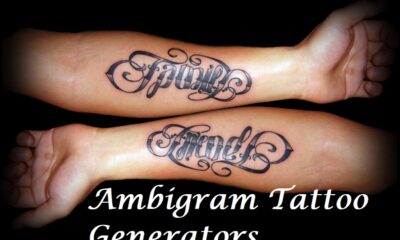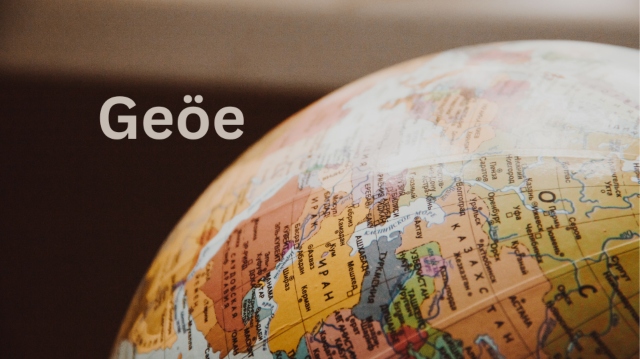General
“Philip Belamant Zilch” – The Latest Fintech Innovator
In the world of finance, there are few names more well-known than Philip Belamant. As the founder and CEO of one of the world’s most successful fintech startups, he has made a name for himself as an innovator in the industry. In this blog post, we will explore Belamant’s latest venture, Zilch. Zilch is a financial technology platform that offers consumers a new way to manage their money. By using artificial intelligence and machine learning, Zilch promises to help users make better financial decisions and save money. So far, Zilch has been met with positive reviews and is quickly gaining traction in the fintech world. If you’re interested in learning more about this exciting new platform, read on for our overview of Zilch.
Who is Philip Belamant?
Philip Belamant is a French-born South African entrepreneur and the founder of Net1, a provider of alternative payment systems. He is also the inventor of the University of Pretoria’s “smart card” technology.
Belamant was born in France in 1963 to a family of Lithuanian Jews who had fled the Nazis. When he was four, his family moved to South Africa. He attended the University of Witwatersrand, where he studied computer science and mathematics.
In 1989, Belamant founded Net1, a company that developed financial transaction processing and other transaction-related services for banks and other financial institutions. In 1995, he invented the “smart card” technology that is used by the University of Pretoria to store student information.
In 2002, Belamant was named Ernst & Young’s “World Entrepreneur of the Year.” He has also received South Africa’s prestigious Order of Mapungubwe (Gold) for his contributions to business and technology.
What is Zilch?
In finance, zilch refers to zero-coupon bonds, which are bonds that do not make periodic interest payments. Instead, they are sold at a discount from their face value and mature at that value. Zero-coupon bonds are often used by investors who want to minimize the effects of taxation on their investment income.
Philip Belamant is a French entrepreneur and the founder of Zilch Technologies, a financial technology company that provides mobile application solutions for businesses and consumers. Belamant has a long history in the financial sector, having worked as a programmer for major banks such as Credit Lyonnais and Société Générale.
In 2012, Belamant founded Zilch Technologies with the goal of simplifying the way people manage their finances. The company’s flagship product is Zilch Card, a prepaid debit card that can be used anywhere Mastercard is accepted. Zilch Card users can load money onto the card via bank transfer or through one of Zilch’s partner retailers, such as 7-Eleven or Office Depot.
Zilch Card is unique in that it allows users to set aside money for specific purposes, such as savings goals or upcoming bills. When the card is used to make a purchase, the funds are automatically transferred from the designated account to cover the cost. This makes it easy to stay on budget and avoid overspending.
Since its launch, Zilch
Zilch is a new fintech startup that is shaking up the industry with its innovative approach to credit. The company was founded by Philip Belamant, who has a long history in the financial sector.
Zilch’s main product is a mobile app that allows users to borrow money without any fees or interest. This makes it an attractive option for people who need quick access to cash but don’t want to pay high fees.
The company is currently available in the UK and US, but plans to expand to other countries in the future. So far, it has been very successful, with thousands of people using the app and giving it positive reviews.
If you’re looking for a new way to borrow money, Zilch is definitely worth checking out.
How does Zilch work?
Understanding how Zilch works is key to unlocking its potential as a powerful financial tool. At its core, Zilch is a lending platform that uses artificial intelligence (AI) to make fast and accurate decisions about loans.
Here’s how it works: first, you create an account and link your bank account. Then, you enter some basic information about yourself and your finances. Zilch uses this information to get a sense of your creditworthiness.
Once you’re approved for a loan, you choose the amount you want to borrow and the repayment schedule that works best for you. Zilch transfers the money into your bank account instantly – there’s no need to wait for days or weeks for approval like with traditional loans.
Finally, you make regular repayments through the app until your loan is paid off. Because of the way Zilch evaluates risk, loans through the platform tend to be relatively small – usually around $1,000 – but this can vary depending on your individual circumstances.
The whole process takes just a few minutes, and because it’s all done through the app, it’s extremely convenient. You can apply for a loan anytime, anywhere – all you need is an internet connection.
What are the benefits of using Zilch?
There are plenty of reasons to use Zilch, the latest fintech innovator. First and foremost, it’s a great way to manage your money and keep track of your spending. It also offers budgeting tools to help you stay on top of your finances, and it’s totally free to use.
Plus, Zilch is designed to help you save money. It does this by automatically transferring small amounts of money into a savings account every day, so you can start building up a nest egg without even thinking about it. And if you ever need to access your savings, there’s no penalty – you can just withdraw the money whenever you want.
Finally, Zilch is a great way to support small businesses and local economies. When you use the app, you’re supporting businesses that have signed up with Zilch, which helps them grow and create jobs. So not only is Zilch good for your own personal finances, but it’s also good for the wider economy.
How to get started with Zilch
If you’re looking to get started with Zilch, the first thing you need to do is sign up for an account. You can do this by going to the Zilch website and clicking on the “Sign Up” button.
Once you have an account, you’ll be able to access all of the features that Zilch has to offer. To start, we suggest taking a look at the “Getting Started” section of the Zilch website. This section will walk you through all of the basics of using Zilch, including how to create a budget, set up goals, and track your progress.
Once you’re comfortable with the basics, we recommend exploring some of the more advanced features that Zilch has to offer. For example, you can use Zilch to monitor your credit score and track your spending patterns. If you’re looking to save money, Zilch also offers a variety of tools and resources that can help you make wise financial decisions.
No matter what your financial goals are, Zilch can help you achieve them. So what are you waiting for? Get started today
Zilch is a new financial technology (fintech) company that is quickly gaining buzz and attention. The company has developed a unique, no-fee credit card that offers cash back rewards and other perks to users. So, how can you get started with Zilch?
First, head over to the Zilch website and sign up for an account. You’ll need to provide some basic information like your name, email address, and date of birth. Once you’re signed up, you can start using your Zilch card right away. There are no monthly fees or annual fees associated with the card, so you can use it as much or as little as you want.
When you use your Zilch card, you’ll earn cash back rewards on all of your purchases. These rewards will be deposited into your Zilch account each month, which you can then use to pay down your balance or withdraw as cash. Additionally, you’ll enjoy other perks like 0% APR financing on select purchases and no foreign transaction fees.
So what are you waiting for? Sign up for Zilch today and start enjoying all the benefits of this revolutionary new fintech company
If you’re looking to get started with Zilch, the first thing you’ll need to do is create an account. Once you’ve done that, you can either link your existing bank account or credit card, or you can add a new one. Once your account is set up, you’ll be able to start using Zilch to manage your finances.
To get started, simply log in to your account and click on the “Add New Transaction” button. From there, you’ll be able to choose whether you want to add a income or expense transaction. Once you’ve selected the type of transaction, simply fill out the relevant information and click “Submit.”
It’s that easy! With Zilch, managing your finances has never been easier. So why not give it a try today?
Conclusion
Finding the best cities to live in the US is no easy task. With our list of the 10 best cities to live in for 2022, we’ve highlighted some of the top picks from across America that offer a great quality of life, plenty of amenities and job opportunities. Whether you’re looking for an urban playground or a tranquil coastal paradise, there’s sure to be something here for everyone. So take your time exploring each city and find one that fits your lifestyle and budget
With so many amazing cities to choose from in the US, it can be difficult to decide where you want to live. After carefully considering a variety of factors, we have compiled our list of the 10 best cities to live in the US in 2022. From bustling metropolises like New York City and Seattle, to laid back beach towns like San Diego and Miami Beach, there is something for everyone on this list. Whether you’re looking for an exciting city life or a more relaxed coastal lifestyle, these are some of the top contenders when searching for your ideal home in 2022.
General
Contexto Answer: Cracking the Context Code

Contexto is a word game that has taken the internet by storm, captivating players with its unique twist on the popular guessing game format. Unlike its predecessor Wordle, which focuses on the exact letters of a hidden word, Contexto delves deeper, challenging players to uncover the secret word based on its context.
This article delves into the world of Contexto, guiding you through its gameplay, strategies, and how to find the elusive “Contexto Answer” for the day’s puzzle.
Unveiling the Mystery: How Contexto Answer
Gameplay Basics:
Contexto Answer presents you with a daily secret word. Your mission: to guess this word by submitting words and analyzing the feedback provided by the game’s AI. Here’s how it works:
- Unlimited Guesses: Unlike games with limited attempts, Contexto allows you to take as many guesses as needed to crack the code.
- Context is King: The key to success lies in understanding how your guesses relate to the secret word. The game doesn’t reveal letters but assigns a position based on contextual similarity.
- Number Ranking: Each guess receives a ranking between 1 and 9999. The lower the number, the closer your guess is to the secret word in terms of its contextual usage.
Understanding the Color-Coded Clues:
Contexto offers visual cues to guide your guesses. After submitting a word, you’ll see it displayed in one of three colors:
- Green (1-300): You’re on the right track! Words in green are highly contextually relevant to the secret word. Aim for this zone to get closer to the answer.
- Yellow (301-1500): Getting warmer, but not quite there. Words in yellow are somewhat related to the secret word, but not as close as those in green.
- Red (Above 1500): Back to the drawing board. Red indicates your guess has little to no contextual connection to the secret word.
The Power of Patience:
There’s no time limit in Contexto, so take your time and analyze the clues provided. With each guess and its corresponding color, you build a picture of the secret word’s context.
Seeking Hints (Optional):
If you get stuck, Contexto offers a hint option (represented by three dots). Clicking this will reveal a new word closer to the secret word, giving you a valuable nudge in the right direction. However, using hints sparingly is recommended to maintain the challenge and satisfaction of solving the puzzle yourself.
Conquering Contexto: Winning Strategies
1. Choosing Your First Word:
The first guess sets the tone for your Contexto journey. Here are some tips:
- Common Words: Start with a common word that appears frequently across various contexts. This helps gauge the overall direction and avoid getting stuck in a niche category.
- Broad Categories: Words like “thing,” “place,” or “action” can be good starting points as they encompass a wide range of possibilities.
- Previous Day’s Answer (Optional): If you know the answer from the previous day, consider a word closely related but not identical. This might provide valuable context clues.
2. Decoding the Color Codes:
Once you start receiving color-coded feedback, it’s time to refine your approach:
- Green Goldmine: When you land a green word, explore synonyms, related concepts, and words that share similar contexts.
- Yellow Stepping Stones: Use yellow words as stepping stones towards greener pastures. Look for words that bridge the gap between your current guess and the secret word’s context.
- Red Rejections: Don’t dwell on red words. Acknowledge the dead end and move on with a new guess that steers clear of that context.
3. Leverage the Power of Elimination:
As you progress, eliminate possibilities based on the feedback. For example, if a guess related to emotions receives a red mark, you can rule out words solely focused on feelings.
4. Diversifying Your Guesses:
Don’t get stuck in a rut. If you’re consistently landing in the red zone, try a completely different category of word to explore new contextual avenues.
5. Collaboration is Key (Optional):
Stuck and can’t seem to crack the code? Discussing your guesses and color-coded clues with friends or online communities can offer valuable insights and fresh perspectives.
FAQs: Frequently Asked Questions About Contexto
Q: Is there a daily reset time for Contexto?
A: Yes, the daily Contexto puzzle resets at midnight local time.
Q: Can I play past Contexto puzzles?
A: Unfortunately, the game doesn’t currently offer the option to play previous day’s
General
Peúgo: Unveiling the Two Sides of a Word

The Portuguese language is rich with diverse vocabulary, and sometimes a single word can hold surprising depth. “Peúgo” is one such example. Depending on the context, it can have two distinct meanings, making it a fascinating word to explore. This article delves into the world of peúgo, uncovering its etymological roots, its contrasting definitions, and its usage in everyday Portuguese.
Unveiling the Etymology: Where Does Peúgo Come From?
The exact origin of “peúgo” remains unclear. However, some linguists propose a connection to the word “peúga,” which translates to “sock” in English. This theory suggests that “peúgo” might have originated as a variant or diminutive form of “peúga,” possibly referring to a shorter type of sock.
Another possibility lies in the realm of onomatopoeia. The sound “peúgo” could be a playful representation of someone splashing in water. This theory, however, lacks strong etymological evidence.
Without a definitive origin story, the word “peúgo” holds a certain mystique. Its ambiguity adds a layer of intrigue to the Portuguese language.
Two Sides of the Coin: The Dual Meanings of Peúgo
The true essence of “peúgo” lies in its ability to represent two contrasting concepts:
-
Meia Curta (Short Sock): This is the most common meaning of peúgo in contemporary Portuguese. It refers to a type of sock that reaches just above the ankle, often worn with casual shoes or sneakers.
-
Hidrolátrico (Water-Lover): This lesser-known definition of “peúgo” is an adjective with a more whimsical character. It describes someone who has a deep love for water, someone who enjoys swimming, diving, or simply spending time near water bodies.
The stark contrast between these meanings highlights the beauty and complexity of language. A single word can morph into different forms, catering to various contexts and adding a touch of surprise for the listener.
Understanding Usage: When to Use “Peúgo”
Knowing the two meanings of “peúgo” is only half the battle. Here’s a breakdown of how to use it correctly in different situations:
Using “Peúgo” as a Noun (Meia Curta):
- When discussing clothing: “Preciso de comprar peúgos novos para a academia.” (I need to buy new peúgos for the gym.)
- Describing someone’s attire: “Ele estava usando jeans e peúgos brancos.” (He was wearing jeans and white peúgos.)
Using Peúgo as an Adjective (Hidrolátrico):
- Highlighting someone’s love for water: “Minha irmã é tão peúga, ela adora nadar no mar.” (My sister is such a peúgo, she loves swimming in the ocean.)
- Describing a group of water enthusiasts: “O clube reúne um grupo de peúgos que gostam de mergulho.” (The club brings together a group of peúgos who enjoy diving.)
Points to Remember:
- While “peúgo” (sock) is the more common meaning, using it as “hidrolátrico” adds a touch of creativity and playfulness to your conversation.
- The adjective form “peúgo” is less frequently used compared to the noun form.
Exploring the Nuances: Formal vs. Informal Settings
The context in which you use peúgo also plays a role. Here’s a quick guide:
-
Formal Settings: In formal situations, it’s best to stick with the more standard vocabulary. Opt for “meia curta” (short sock) instead of “peúgo” (sock). Similarly, “amante da água” (water lover) would be a safer choice than “hidrolátrico” (water-lover) in formal contexts.
-
Informal Settings: Among friends and family, feel free to use “peúgo” in both its noun and adjective forms. It can add a touch of informality and lightheartedness to your conversation.
Remember: Context is key. Choose the meaning and form of “peúgo” that best suits the situation and the level of formality you’re aiming for.
Fun with “Peúgo”: Examples and Idioms (if any)
There aren’t any specific idioms directly related to “peúgo.” However, you can use the word creatively in sentences to add a touch of humor:
- “Ele é tão desorganizado que perdeu um peúgo e nem percebeu!” (He’s so disorganized, he lost a peúgo and didn.
General
The Fascinating World of Geöe: An In-depth Exploration
-

 Fashion2 years ago
Fashion2 years agoBest Free Ambigram Generators to Design Tattoo and Art
-

 General2 years ago
General2 years agoSetup Cross-Domain Tracking In Google Tag Manager
-

 Technology2 years ago
Technology2 years agoThe ascent of the ‘business technologist’ and ‘hyperautomation’
-

 Uncategorized1 year ago
Uncategorized1 year agoThe Best Host Bars In korea
-

 Health and Fitness1 year ago
Health and Fitness1 year agoWhat I Wish Someone Had Told Me About Comfi Pure Contact Lenses
-
Entertainment2 years ago
BUSINESSHow To Keep Readers Engaged With Your Monthly Newsletters
-
Entertainment2 years ago
9Anime: Best Free Anime Streaming Website, 9Anime.gg Alternatives
-
Fashion1 year ago
All Time Best Selling Outfits Of Yellowstone TV Series

